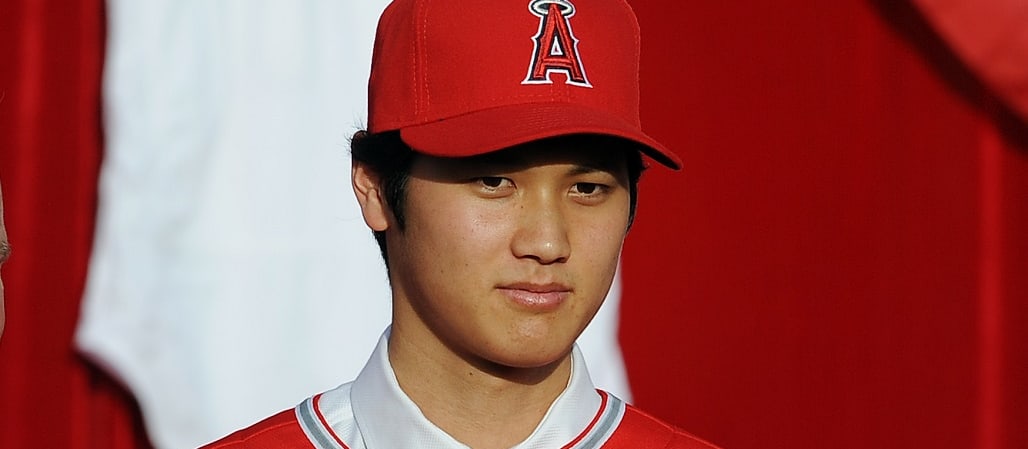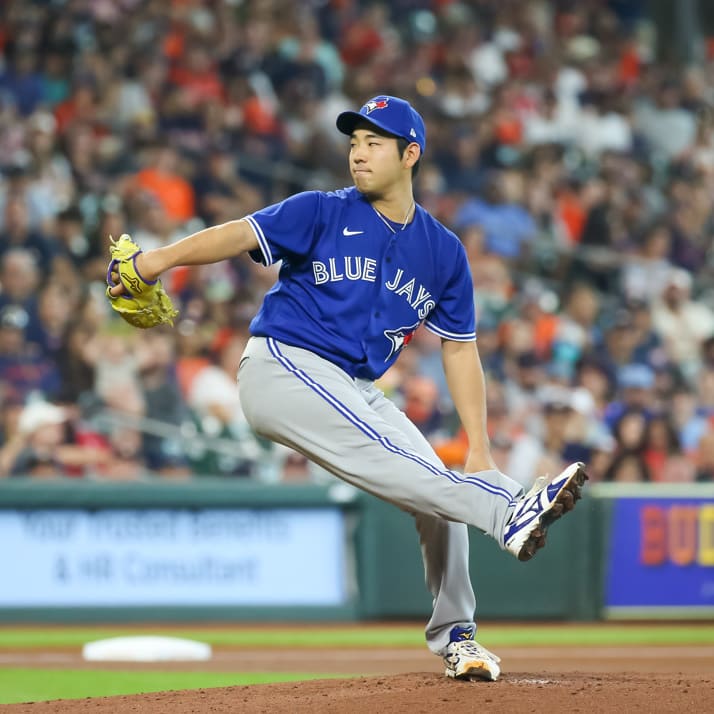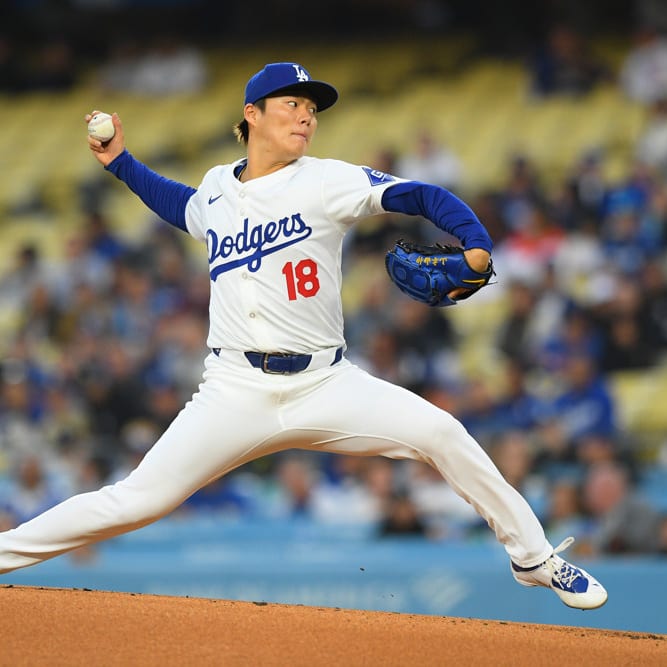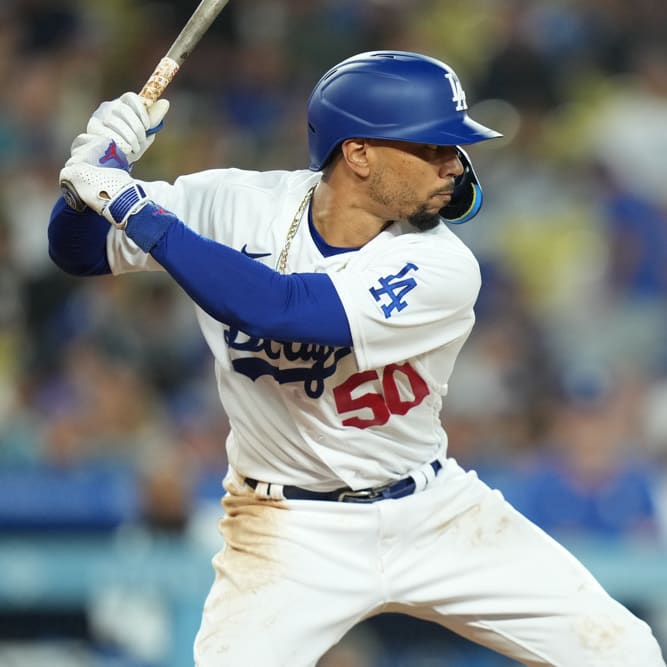This article is part of our The Z Files series.
Check out a recent Z Files for an idea of some of the strategies possible in an NFBC DC league. For those unfamiliar, these are 15-team mixed draft and hold leagues with 50 roster spots. There are no free agent pickups along with no trading. Each league is played out individually, then all the teams are lumped together to determine an overall champion.
The lack of trading is key when it comes to overall planning. An old fantasy baseball axiom is "Draft for value, trade for balance." Putting aside my disdain for the term "value", the notion is sound. Accumulate as many stats as possible at the draft, let things play out and deal to maximize points. Obviously, in these leagues, while a surplus in a category scores you more points, you're unable to manage the categories via trade to squeeze out even more points.
The other consideration is the crowning of an
Check out a recent Z Files for an idea of some of the strategies possible in an NFBC DC league. For those unfamiliar, these are 15-team mixed draft and hold leagues with 50 roster spots. There are no free agent pickups along with no trading. Each league is played out individually, then all the teams are lumped together to determine an overall champion.
The lack of trading is key when it comes to overall planning. An old fantasy baseball axiom is "Draft for value, trade for balance." Putting aside my disdain for the term "value", the notion is sound. Accumulate as many stats as possible at the draft, let things play out and deal to maximize points. Obviously, in these leagues, while a surplus in a category scores you more points, you're unable to manage the categories via trade to squeeze out even more points.
The other consideration is the crowning of an overall champion. Some believe to take home the big prize, more chances need to be taken. Others disagree, but all it takes us a couple of riverboat gamblers in each draft to escalate the ADP of high risk/high reward players, as well as the top prospects.
As alluded to, the chief area NFBC drafters likely deviate from most home leagues is in pitching. The NFBC loves their aces. This instigates a domino effect, pushing all pitching up the board. This is in direct contrast to how many draft in home leagues. Relative to hitters, pitching is less predictable. As such, many prefer to bully hitting then manage pitching, which usually entails dealing from batting strength to address pitching weakness. In the NFBC, if you don't draft a solid ratio foundation early, you need to be extremely successful with later picks, often relying on Lady Luck. Due to the advanced means of analyzing hurlers, it's harder to wait on pitching.
It's only one league, but I'm eager to see how a room of many non-NFBC drafters approach pitching and prospects. Friend and colleague Greg Ambrosius organized an NFBC DC consisting of 15 speakers from Baseball HQ's First Pitch Arizona Forum. RotoWire has a strong presence with Jeff Erickson, Derek VanRiper, Tim Heaney and Jason Collette joining me in the festivities. I'm sure we'll all be sharing our picks and analysis on social media (follow me on Twitter: @ToddZola).
At the crossroads of pitching and prospects is Shohei Ohtani. You really didn't think he'd go without a mention, did you? It's all Ohtani, all the time right now. His current NFBC ADP is a robust 73. Here's what I wrote for my private site:
I'll be candid. Some of the early expectations are goofy. This goes for both some industry analysts as well as early leagues. I'm not questioning Ohtani's skills, since we're looking at an ace here. For a complete analysis, check out my piece at RotoWire. My best comp for Ohtani this season, in terms of skills, is Jacob deGrom. That's really good. This isn't peak, this is now. Peak is Chris Sale/Noah Syndergaard neighborhood. But, here's the deal. The kid pitched 25 innings last season. He's still rehabbing from ankle surgery. The Angels want to challenge the Houston Astros, no doubt. However, they won't jeopardize Ohtani's future. If my cautious approach comes back to haunt me, so be it. And, don't even get me started on the added risk he incurs as a hitter.
For those wondering, Ohtani lands around the 13th/14th round on my board, so I'm not sniffing him this season. Sometimes, you must be willing to be wrong.
I'm about to break one of my rules. Among my favorite tweets is Tom Tango saying something like "small sample" and "but" should never be in the same sentence. Well, it's only three auctions, but the results are intriguing. The NFBC runs satellite auctions. Actually, that's only partially true. NFBC veteran Andy Saxton picked up the ball from yours truly and administers a bunch of 15-team mixed auctions for the NFBC. He sends me the results and I compile an average auction value (AAV). Thus far, lining up the order against the ADP, the average cost for pitching is exceeding the ADP. This is especially true at the top but pervades through the rest of the auction. Most notably, five of the top 15 purchases are pitchers:
| Pitcher | AAV | AAV rank | ADP |
| Max Scherzer | $43.33 | 4 | 11 |
| Chris Sale | $42.00 | 6 | 12 |
| Clayton Kershaw | $41.33 | 7 | 6 |
| Corey Kluber | $40.67 | 8 | 13 |
| Madison Bumgarner | $36.33 | 14 | 27 |
Things could obviously change, but the NFBC is true to form, chasing their beloved strikeouts. Because you're yearning to know, Ohtani is pitcher only and is costing $17, the 75th most expensive player.
Looking at the recent Fantasy Sports Association Draft, a 14-team mixed league that features defending champion Derek VanRiper, Lawr Michaels took the first pitcher, Clayton Kershaw, at 1.13. The dynamic duo of Rick Wolf and Glenn Colton then double-tapped anchors with Max Scherzer and Corey Kluber at the wheel. For what it's worth, there's limited trading in this format, each club allowed to consummate one deal with each of the other squads. Yeah, I know, but I didn't make the rules.
This pitching trend is typical of industry leagues (the only word I loathe more than "value" is "expert"). Rick and Glenn are on record as analyzing the player pool and determining that in order to compete in pitching, you need to hit it early. I concur with this sentiment.
Over the years I've preached the mantra everything is relative. The 50th best pitcher is the 50th best pitcher, helping your team equally each year, even though that pitcher's stats could be different year to year. Relatively speaking, compared to that season's pool, the 50th best pitcher helps the same every year.
Well, things are different now. Sure, surprise pitchers will emerge, as they do every season. However, as I hinted earlier, identifying a late-round gem is a challenge with the wealth of information available. Landing on a late difference-maker is as much luck as it is preparation. The larger point is, not only are there injury and performance risks dotting the second and third tiers, the average number of innings emanating from these arms is expected to fall short of past campaigns. This renders the still-high innings from the elite even more significant. The number of stanzas tossed by true aces not only provides a greater volume of strikeouts and a greater influence on ratios, they offer more foundational frames to absorb less-than-desired performances. Whoever does emerge from the lower tiers to be top-tier worthy will likely fall short in innings as compared to the quintet discussed in the auction results.
The other hot-button topic transcending all formats, not just the NFBC, is the power-speed dichotomy in hitting. Are homers paramount since MLB is homer-happy and runs and RBI dovetail with homers? Is it integral to address steals early since there's so much late thunder? The answer to both questions is yes and no.
Honestly, you can get what you need with any approach. I much prefer to take what the draft gives, then figure out how to balance later. The last thing I want to do is leave stats on the table just to focus on something specific. If my first batter doesn't run, there will be a ballast later. If my first hitter lags in power, there will be a bopper later.
The sole exception to this is handling Dee Gordon. He's so extreme, I'm willing to leave him for someone else in a draft. In an auction, I'll welcome the discount and buy what I need to supplement. In a draft, you're somewhat at the mercy of the rest of the table, leaving the home run teeter to your already banked stolen base totter.
For a while, I was hoping to begin a draft with Gordon in the second round then Nelson Cruz in the fourth or fifth to get the stats in sync. I have Cruz ranked as a second rounder, but early on he was lasting until the fifth, sometimes later. The combo of Utility-only position and advancing age caused many to pause. However, it appears Cruz is taking on some helium as drafters reevaluate. His ADP is still late fourth, but it's a risk waiting that long and while taking him in the third still offers profit potential, the opportunity cost of grabbing another position, likely a pitcher, is a factor.
That'll do it for this episode. Next up are a couple of cool research studies. The first involves some playing time trends while the second debunks the notion saves aren't predictable.










